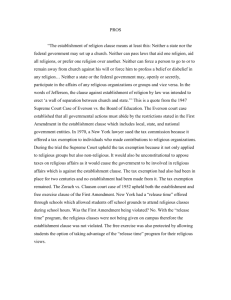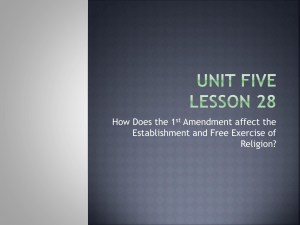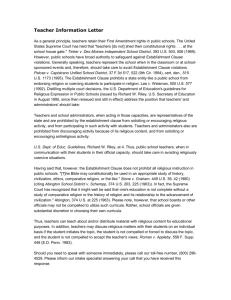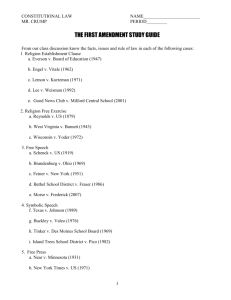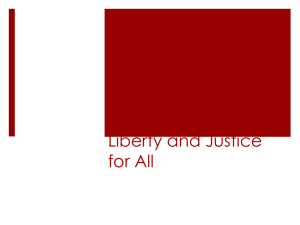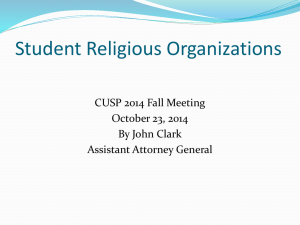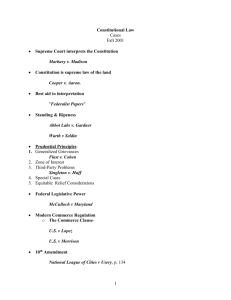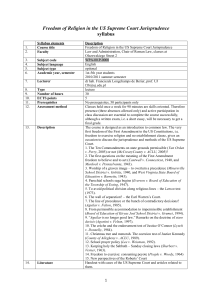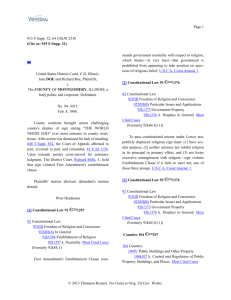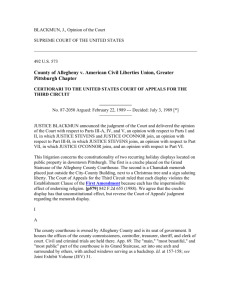Landmark Supreme Court Cases and the Constitution: Allegheny v
advertisement
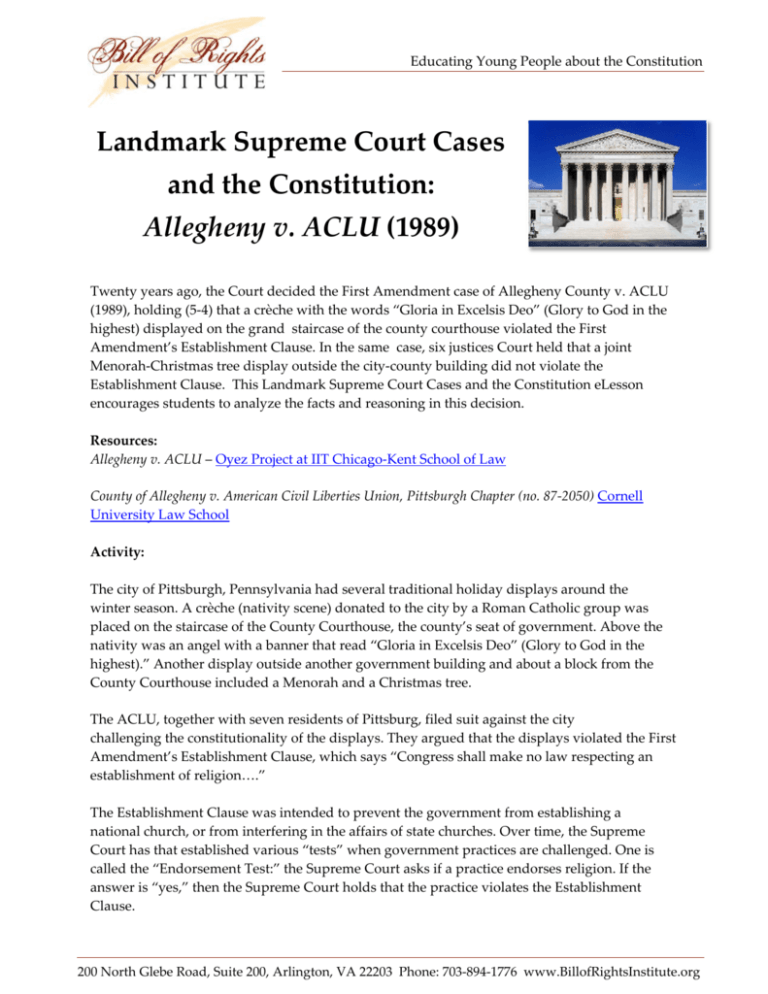
Educating Young People about the Constitution Landmark Supreme Court Cases and the Constitution: Allegheny v. ACLU (1989) Twenty years ago, the Court decided the First Amendment case of Allegheny County v. ACLU (1989), holding (5‐4) that a crèche with the words “Gloria in Excelsis Deo” (Glory to God in the highest) displayed on the grand staircase of the county courthouse violated the First Amendment’s Establishment Clause. In the same case, six justices Court held that a joint Menorah‐Christmas tree display outside the city‐county building did not violate the Establishment Clause. This Landmark Supreme Court Cases and the Constitution eLesson encourages students to analyze the facts and reasoning in this decision. Resources: Allegheny v. ACLU – Oyez Project at IIT Chicago‐Kent School of Law County of Allegheny v. American Civil Liberties Union, Pittsburgh Chapter (no. 87‐2050) Cornell University Law School Activity: The city of Pittsburgh, Pennsylvania had several traditional holiday displays around the winter season. A crèche (nativity scene) donated to the city by a Roman Catholic group was placed on the staircase of the County Courthouse, the county’s seat of government. Above the nativity was an angel with a banner that read “Gloria in Excelsis Deo” (Glory to God in the highest).” Another display outside another government building and about a block from the County Courthouse included a Menorah and a Christmas tree. The ACLU, together with seven residents of Pittsburg, filed suit against the city challenging the constitutionality of the displays. They argued that the displays violated the First Amendment’s Establishment Clause, which says “Congress shall make no law respecting an establishment of religion….” The Establishment Clause was intended to prevent the government from establishing a national church, or from interfering in the affairs of state churches. Over time, the Supreme Court has that established various “tests” when government practices are challenged. One is called the “Endorsement Test:” the Supreme Court asks if a practice endorses religion. If the answer is “yes,” then the Supreme Court holds that the practice violates the Establishment Clause. 200 North Glebe Road, Suite 200, Arlington, VA 22203 Phone: 703‐894‐1776 www.BillofRightsInstitute.org Educating Young People about the Constitution The Court agreed that the crèche was an unconstitutional violation of the Establishment Clause. The ruling asserted, “The government’s use of religious symbolism is unconstitutional if it has the effect of endorsing religious beliefs, and the effect of the government’s use of religious symbolism depends upon its context.” In this case, the Court reasoned, the crèche stood alone and contained an unmistakable religious message. “The government may acknowledge Christmas as a cultural phenomenon, but, under the First Amendment, it may not observe it as a Christian holy day by suggesting that people praise God for the birth of Jesus.” On the other hand, the Court held that the Menorah and Christmas tree display did not violate the Establishment Clause. The opinion was careful to note that the display was not constitutional simply because it included two religions. Rather, it was constitutional because it celebrated the two holidays using what the Court viewed as secular symbols. This made the display, in the Court’s view, a “recognition” of the two holidays, rather than an “endorsement” of them. Discussion Questions: 1. What holiday decorations were challenged in the case of Allegheny County v. ACLU (1989)? 2. How did the Supreme Court rule? 3. After looking at the pictures of the two displays, do you agree with the Court’s ruling? What is your constitutional reasoning? 4. Should the judicial system create “tests” to determine whether government practices violate the First Amendment or is that a job that belongs to Congress? Explain. 5. In his dissenting opinion, Justice Kennedy accused the majority in this case of having a “latent hostility” towards religion. How would you respond to that assertion?
